How to Make Green Energy Work for Your Home
In today's world, the shift towards sustainable living is not just a trend; it's a necessity. As we become more aware of the environmental challenges facing our planet, many homeowners are asking, "How can I contribute to a greener future?" The answer lies in green energy solutions that can be seamlessly integrated into your home. From solar panels to wind turbines, there are numerous ways to harness renewable energy sources that not only reduce your carbon footprint but also offer significant financial benefits. In this article, we will explore various green energy options, their advantages, and practical tips for implementing these technologies in your home.
So, what exactly is green energy? At its core, green energy refers to energy derived from natural sources that are replenished at a faster rate than they are consumed. This includes solar, wind, hydroelectric, and geothermal energy. The significance of utilizing these renewable resources cannot be overstated. By adopting green energy solutions, we can significantly reduce our dependence on fossil fuels, which are a major contributor to greenhouse gas emissions and climate change. Imagine a world where our homes are powered by the sun and the wind, reducing pollution and preserving our planet for future generations!
Why should you consider making the switch to green energy? The benefits are numerous and far-reaching. Not only can you enjoy lower energy bills, but you can also increase your property value and make a positive impact on the environment. Let’s dive deeper into these advantages.
Switching to green energy can lead to significant cost savings over time. For instance, installing solar panels can drastically reduce your monthly utility bills. Many homeowners report savings of up to 50% or more on their energy costs after making the switch. Additionally, renewable energy systems often come with low maintenance costs, making them a financially sound investment in the long run.
Many governments recognize the importance of promoting sustainable energy use and offer financial incentives to homeowners who adopt green energy solutions. These can include tax credits, rebates, and grants aimed at offsetting the initial costs of installation. For example, in the United States, the federal solar tax credit allows homeowners to deduct a significant percentage of the cost of solar panel installation from their federal taxes. It's a win-win situation!
Investing in green energy not only benefits your wallet but also enhances your home's value. In today's real estate market, homes equipped with renewable energy technologies are increasingly seen as valuable assets. A property with solar panels or energy-efficient systems can attract more buyers and fetch a higher price. Think of it as future-proofing your home against rising energy costs!
Transitioning to green energy helps mitigate climate change and reduces pollution levels. By utilizing renewable energy sources, you are actively contributing to a cleaner environment. Each kilowatt-hour of renewable energy produced means one less kilowatt-hour generated from fossil fuels, which in turn reduces harmful emissions. It's like planting a tree for every solar panel installed—you're making a tangible difference!
With so many options available, how do you choose the right green energy solutions for your home? Assessing your energy needs and understanding the technologies available is crucial. Consider factors such as your location, budget, and energy consumption patterns.
Solar panels are one of the most popular choices for homeowners looking to harness renewable energy. There are various types of solar systems available, including grid-tied, off-grid, and hybrid systems. Each has its own installation requirements and benefits. For example, grid-tied systems are often more cost-effective and allow homeowners to sell excess energy back to the grid.
If you live in a suitable location, small wind turbines can be an effective way to generate clean energy. These systems can complement solar panels, providing an additional source of renewable energy. However, it's essential to assess the feasibility of wind energy in your area, as factors like wind speed and zoning regulations can impact installation.
Successfully integrating green energy solutions into your home requires careful planning and execution. Start by conducting an energy audit to identify areas for improvement. Understanding your current energy usage will help you make informed decisions about which technologies to invest in.
Conducting an energy audit can help pinpoint inefficiencies in your home. You can either hire a professional or perform a DIY audit by examining your energy bills and checking for drafts, outdated appliances, and insulation issues. This step is crucial in maximizing the benefits of your green energy investments.
While it may be tempting to tackle installations yourself, hiring qualified professionals ensures that your green energy systems function efficiently. Look for contractors with experience in renewable energy installations to guarantee quality work and adherence to local regulations.
Regular maintenance is essential for the longevity and efficiency of your green energy systems. Just like a car needs regular oil changes, your solar panels and wind turbines require routine care to perform optimally.
Conducting routine inspections can help identify potential issues early on. Check for dirt accumulation on solar panels, loose connections, or any signs of wear and tear on wind turbines. Addressing problems promptly can prevent costly repairs down the line.
As technology evolves, upgrading your green energy systems may become necessary. Staying up to date with the latest advancements can significantly enhance the performance and efficiency of your systems. It's like upgrading your smartphone—new features can make a world of difference!
- What is green energy? Green energy refers to energy derived from renewable resources that are environmentally friendly.
- How can I save money with green energy? By switching to renewable energy sources like solar or wind, you can significantly reduce your utility bills.
- Are there government incentives for green energy? Yes, many governments offer tax credits and rebates for homeowners who invest in renewable energy technologies.
- How do I choose the right green energy solution for my home? Assess your energy needs, budget, and the available technologies in your area to make an informed decision.
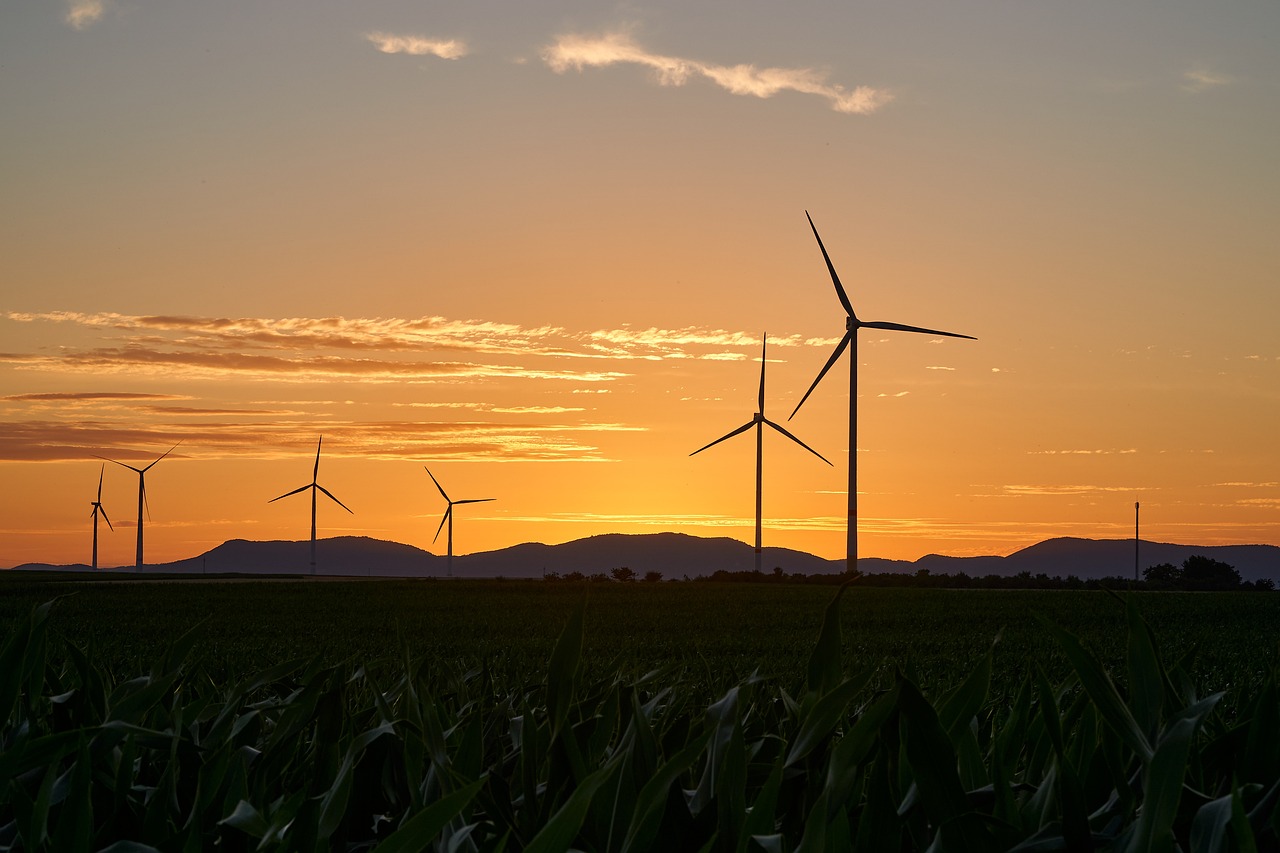
Understanding Green Energy
Green energy refers to energy derived from renewable sources that have a minimal impact on the environment. Imagine a world where our energy needs are met without harming the planet—this is the essence of green energy. The most common sources include solar, wind, hydroelectric, geothermal, and biomass. Each of these sources plays a crucial role in reducing our reliance on fossil fuels and combating climate change. By utilizing these renewable resources, we not only decrease our carbon footprints but also promote a sustainable future for generations to come.
Let's break down the main types of green energy:
- Solar Energy: This is harnessed from the sun's rays using solar panels. It's one of the fastest-growing renewable energy sources worldwide.
- Wind Energy: Generated by wind turbines, this clean energy source captures the kinetic energy from wind and converts it into electricity.
- Hydroelectric Energy: This involves generating power from flowing water, typically through dams. It's a reliable and efficient energy source.
- Geothermal Energy: This uses heat from beneath the Earth's surface to generate electricity and provide heating.
- Biomass Energy: Derived from organic materials, biomass can be used for heating, electricity, or even as a fuel for vehicles.
Understanding the significance of these energy sources is vital. They not only help in reducing greenhouse gas emissions but also provide energy security by diversifying our energy supply. Moreover, as technology advances, the efficiency and affordability of these solutions continue to improve, making them more accessible to homeowners. By adopting green energy solutions, we are taking a crucial step towards a sustainable lifestyle that benefits both our wallets and the environment.
In addition to the environmental benefits, green energy technologies can also stimulate economic growth. The renewable energy sector has become a significant source of job creation, with roles ranging from engineering to installation and maintenance. This shift towards sustainable energy not only helps the planet but also fosters local economies and communities.
As we move forward in this green revolution, it's essential to educate ourselves and others about the importance of renewable energy. By understanding how green energy works and its benefits, we can make informed decisions that contribute to a healthier planet. Are you ready to embrace the change and make a difference in your community?
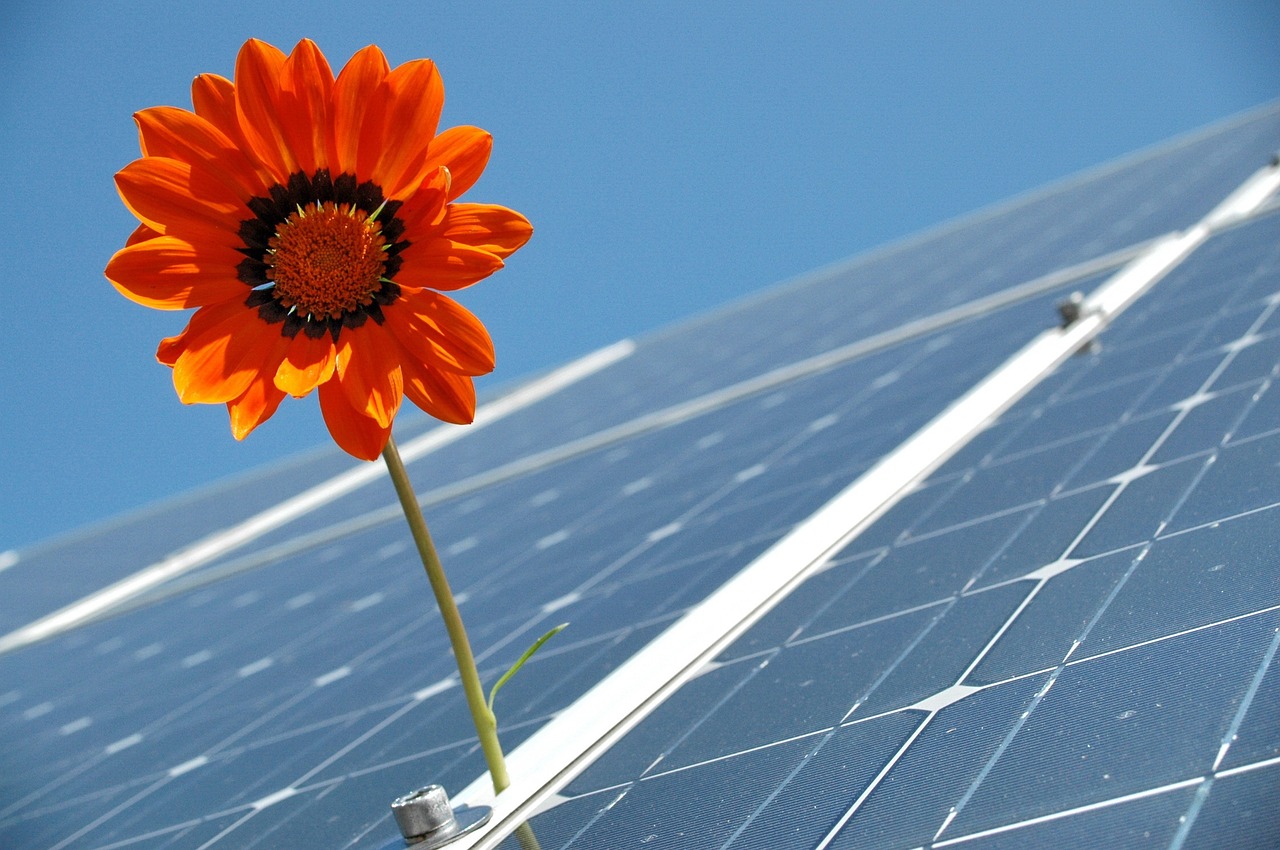
Benefits of Green Energy
Adopting green energy solutions in your home is more than just a trend; it’s a lifestyle choice that can bring a multitude of benefits. Imagine slashing your energy bills while simultaneously contributing to a healthier planet—sounds like a win-win, right? By harnessing renewable energy sources such as solar, wind, and geothermal, homeowners can enjoy not only financial savings but also an enhanced quality of life. Let's dive into some of the key advantages that come with making the switch to green energy.
One of the most immediate and tangible benefits of green energy is the potential for cost savings. When you invest in renewable energy technologies, you can significantly reduce your monthly utility bills. For instance, solar panels can generate electricity that powers your home, allowing you to rely less on your local utility company. Over time, these savings can add up to a substantial amount, giving you more freedom to spend on things you love. In fact, many homeowners report saving anywhere from 20% to 50% on their energy costs after switching to solar energy.
Another compelling reason to consider green energy is the government incentives available for homeowners. Many countries and states offer various financial incentives, such as tax credits, rebates, and grants, to encourage the adoption of renewable energy technologies. For example, in the United States, the Federal Solar Tax Credit allows homeowners to deduct a significant percentage of the cost of installing solar panels from their federal taxes. This can make the upfront investment much more manageable and appealing. Here’s a quick breakdown of some common incentives:
| Incentive Type | Description |
|---|---|
| Tax Credits | Reductions in tax liability for renewable energy investments. |
| Rebates | Cash back on the purchase of green technology. |
| Grants | Funding provided to support renewable energy projects. |
Moreover, investing in green energy is not just about saving money; it also represents a long-term investment in your property. Homes equipped with renewable energy systems often have a higher market value. As more buyers seek energy-efficient homes, properties with solar panels or wind turbines become increasingly attractive. This means that not only are you saving money on energy costs, but you’re also adding value to your home. It's like planting a tree that grows in value over time while providing shade and beauty!
Last but certainly not least, the environmental impact of switching to green energy cannot be overstated. By utilizing renewable energy sources, you are actively participating in the fight against climate change. Traditional energy sources, such as fossil fuels, contribute significantly to greenhouse gas emissions, which are a major driver of global warming. In contrast, green energy sources produce little to no emissions. By making this transition, you are not only reducing your carbon footprint but also promoting a sustainable future for generations to come.
In summary, the benefits of green energy extend beyond just financial savings. They encompass a holistic approach to living that prioritizes economic savings, increased property value, and environmental stewardship. So, why not take the plunge and explore how green energy can transform your home and your life?
- What are the main types of green energy? The main types include solar, wind, geothermal, and hydroelectric energy.
- How can I determine if green energy is right for my home? Consider factors such as your location, budget, and energy needs.
- What incentives are available for green energy adoption? Many governments offer tax credits, rebates, and grants to encourage the use of renewable energy.
- How much can I save by switching to green energy? Savings can vary, but many homeowners report reductions of 20% to 50% on their energy bills.
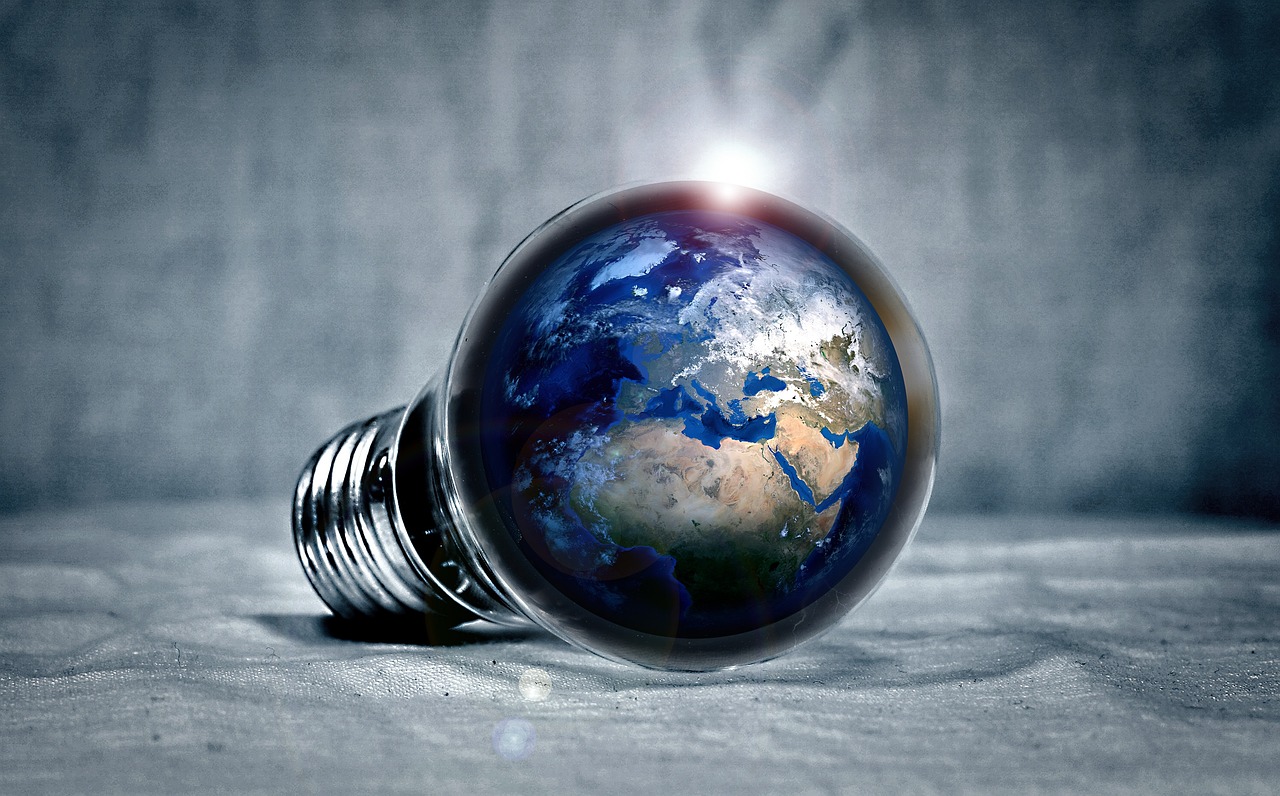
Cost Savings
Switching to green energy is not just a trend; it's a smart financial move that can lead to significant over time. Imagine slashing your monthly utility bills while contributing to a healthier planet—sounds like a win-win, right? By harnessing renewable energy sources such as solar and wind, homeowners can dramatically reduce their reliance on traditional energy providers, which often come with fluctuating rates and hidden fees. In fact, many families have reported saving hundreds of dollars each year after making the switch.
One of the most compelling aspects of green energy is the long-term financial benefits it offers. For instance, solar panels can generate free electricity after the initial investment, allowing you to enjoy lower bills for decades. Moreover, many states and local governments provide incentives that can offset installation costs, making it even more affordable. Here’s a quick breakdown of potential savings:
| Green Energy Source | Initial Investment | Annual Savings | Payback Period |
|---|---|---|---|
| Solar Panels | $15,000 | $1,200 | 12.5 years |
| Wind Turbines | $40,000 | $2,000 | 20 years |
As you can see, while the initial investment for some green technologies may seem daunting, the long-term savings can be substantial. Plus, with many solar panel systems lasting 25 years or more, the potential for savings only increases as time goes on. It’s like planting a tree that grows and bears fruit for decades!
Additionally, adopting green energy can increase your home’s value. Buyers are increasingly looking for properties that are energy-efficient and environmentally friendly. Homes equipped with solar panels or energy-efficient appliances often sell for a premium, making them a wise investment if you’re considering selling in the future.
In summary, the shift to green energy not only helps your wallet but also enhances your property value. It’s a sustainable choice that pays off in more ways than one, allowing you to enjoy lower bills and a greener lifestyle. So, why not take the plunge and start saving today?
- What are the initial costs of switching to green energy? The costs vary depending on the technology you choose, but many programs offer incentives to help offset these costs.
- How much can I save by switching to solar energy? Homeowners can save anywhere from $1,200 to $2,000 a year depending on their energy consumption and local incentives.
- Is green energy reliable? Yes, with advancements in technology, renewable energy sources are becoming more reliable and efficient.

Government Incentives
When it comes to adopting green energy solutions, one of the most compelling reasons to make the switch is the array of available to homeowners. These incentives are designed to encourage the use of renewable energy sources, making it more affordable and accessible for everyone. Whether you’re considering solar panels, wind turbines, or other green technologies, understanding these incentives can significantly impact your decision-making process.
Many governments offer a variety of financial incentives, including tax credits, rebates, and grants. These programs can help offset the initial investment costs associated with installing renewable energy systems. For instance, in the United States, the federal government provides a Investment Tax Credit (ITC), which allows homeowners to deduct a substantial percentage of the cost of installing solar energy systems from their federal taxes. This can lead to substantial savings! In addition, many states have their own incentives, which can further reduce costs.
Here’s a quick overview of some common types of government incentives:
| Incentive Type | Description |
|---|---|
| Tax Credits | Direct reductions on your tax bill based on the cost of your renewable energy system. |
| Rebates | Cash back offers provided by local or state governments after installation of renewable energy systems. |
| Grants | Financial assistance that does not need to be repaid, often for specific renewable energy projects. |
| Feed-in Tariffs | Guaranteed payments for energy produced from renewable sources, encouraging homeowners to generate their own energy. |
Moreover, many local utility companies offer incentives to promote the use of renewable energy. These can include discounted rates for energy produced from solar panels or wind turbines, as well as programs that allow homeowners to sell excess energy back to the grid. This not only provides a financial benefit but also contributes to a more sustainable energy ecosystem.
It's essential to do your homework and research the specific incentives available in your area. Websites like the Database of State Incentives for Renewables & Efficiency (DSIRE) provide comprehensive information about federal, state, and local incentives. By taking advantage of these financial programs, you can make your transition to green energy not only environmentally friendly but also economically viable.
In summary, play a crucial role in making green energy solutions more attainable for homeowners. By leveraging these financial benefits, you can significantly reduce the upfront costs of adopting renewable energy technologies, paving the way for a more sustainable and cost-effective lifestyle.
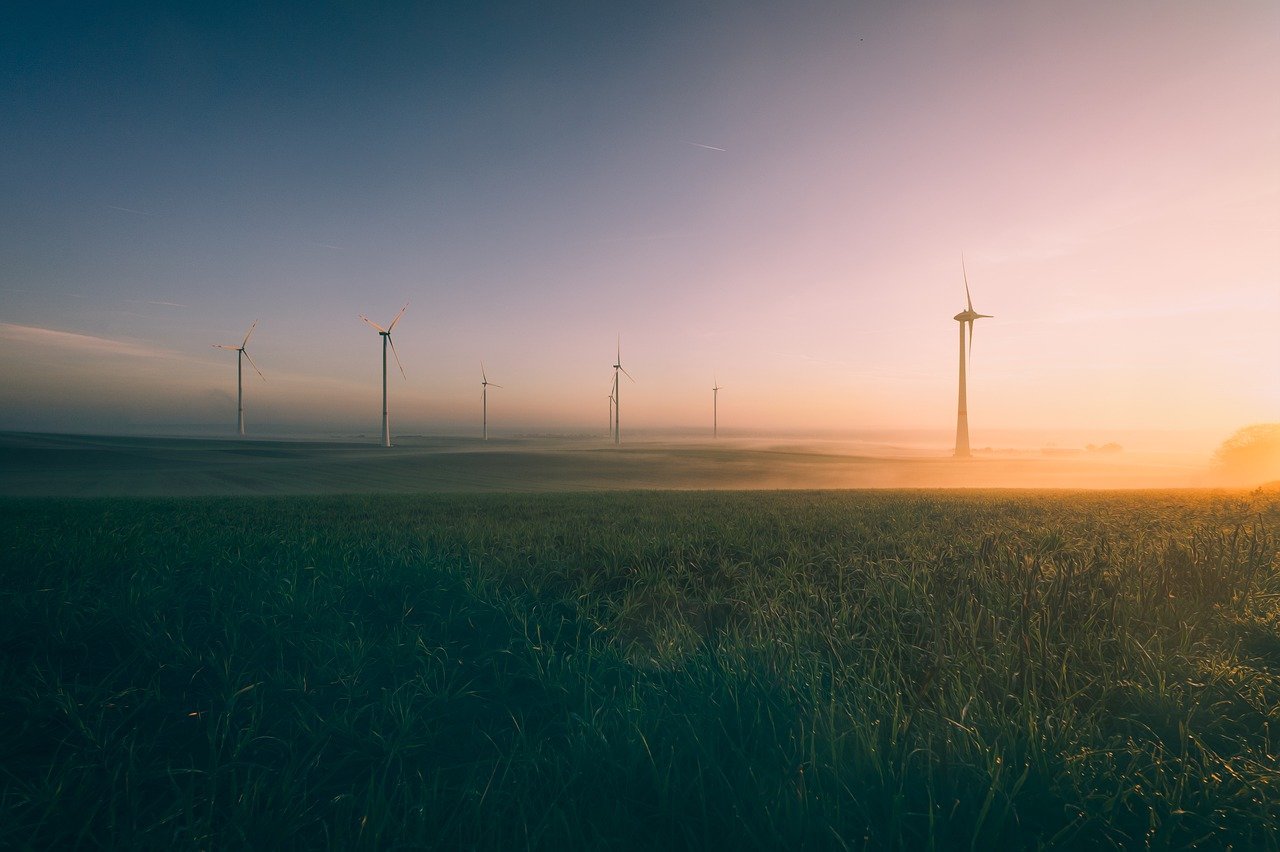
Long-Term Investment
When it comes to making decisions about your home, thinking long-term is crucial. Investing in green energy solutions isn't just about saving a few bucks on your utility bills; it’s about enhancing your property’s value and ensuring a sustainable future. Imagine your home as a living entity that thrives on energy. By integrating renewable energy technologies, you're not just feeding it; you're empowering it to grow in value over time.
One of the most compelling reasons to consider green energy as a long-term investment is the rising demand for eco-friendly homes. Buyers are increasingly looking for properties equipped with solar panels, energy-efficient appliances, and other sustainable features. This trend means that homes with these upgrades often sell for a premium compared to traditional homes. In fact, studies have shown that homes with solar energy systems can sell for up to 4% more than comparable homes without them. This is not just a fleeting trend; it’s a shift in how we value real estate.
Moreover, the initial costs associated with installing green energy systems, such as solar panels or wind turbines, can be daunting. However, these costs can be recouped in the long run through energy savings and increased property value. For instance, let’s break down the potential savings:
| Green Energy System | Initial Investment | Annual Savings | Payback Period |
|---|---|---|---|
| Solar Panels | $15,000 | $1,500 | 10 years |
| Wind Turbines | $20,000 | $2,000 | 10 years |
| Energy-Efficient Appliances | $5,000 | $500 | 10 years |
As you can see from the table, while the upfront costs may seem high, the long-term savings can make these investments worthwhile. Plus, many states and local governments offer incentives that can offset these initial costs, making it even more appealing. It's like getting a bonus for being a responsible homeowner!
In addition to financial benefits, investing in green energy also aligns with a growing societal shift towards sustainability. More people are becoming eco-conscious, and owning a home that reflects these values can be a significant selling point. It’s not just about keeping up with the Joneses; it’s about leading the charge towards a more sustainable future.
Ultimately, viewing green energy as a long-term investment means understanding that every dollar spent today is a step towards a more valuable, efficient, and eco-friendly home tomorrow. So, why wait? Embrace the green energy revolution and watch your home flourish!
- What are the most common types of green energy systems?
Solar panels and wind turbines are the most popular options, but geothermal and biomass energy systems are also gaining traction. - How can I finance my green energy project?
Many options are available, including government grants, tax credits, and financing programs specifically for renewable energy projects. - Do green energy systems require a lot of maintenance?
Generally, they require minimal maintenance, but regular inspections can help ensure they operate efficiently. - How long does it take to see a return on investment?
The payback period varies depending on the system and local energy costs, but many homeowners see a return within 5 to 15 years.
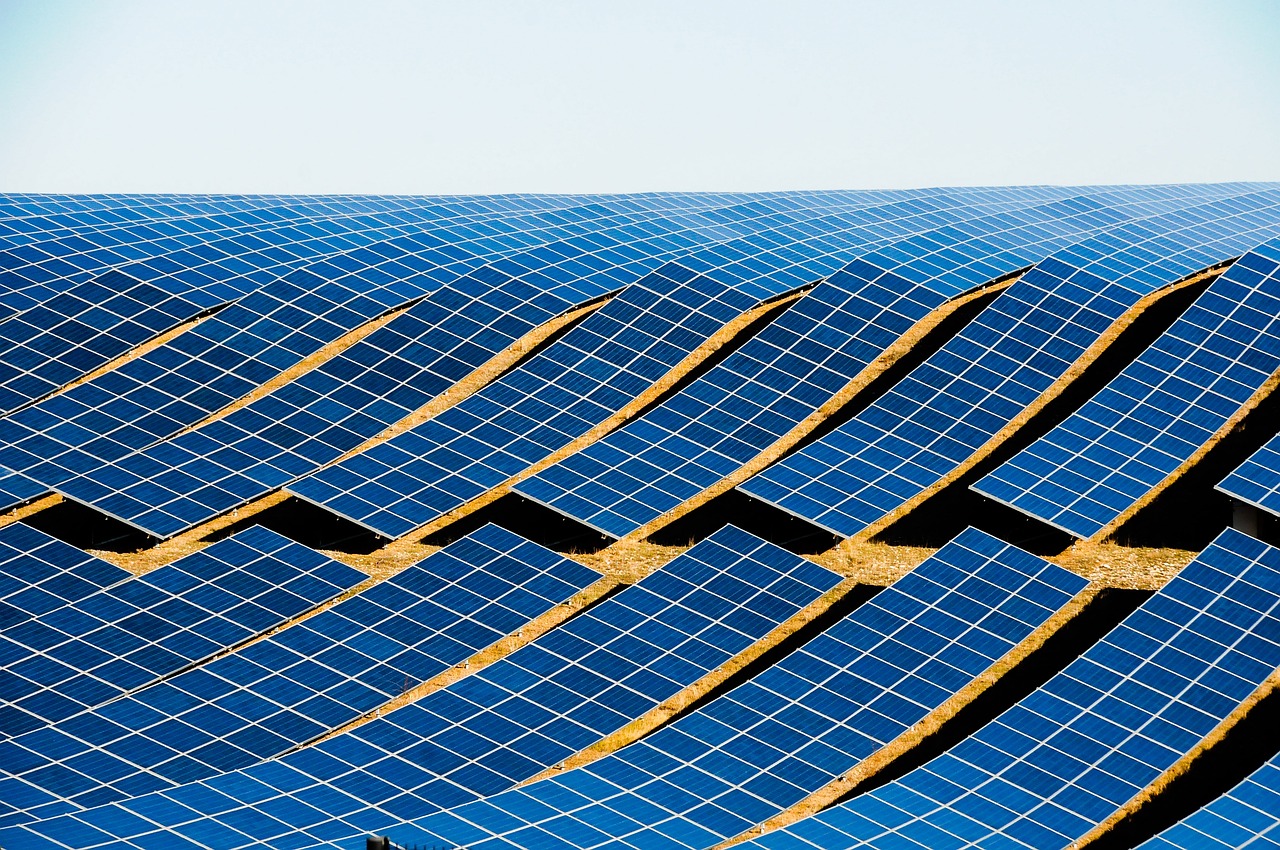
Environmental Impact
When we talk about green energy, we're not just discussing a trendy buzzword; we're diving headfirst into a crucial solution for our planet's future. The environmental impact of adopting renewable energy sources is profound and far-reaching. By making the switch to green energy, homeowners can actively contribute to the fight against climate change and help reduce the harmful effects of pollution. Imagine a world where clean air and water are the norms, not the exceptions. This is the vision that green energy can help us achieve.
One of the most significant ways green energy helps is by drastically reducing greenhouse gas emissions. Traditional energy sources, such as coal and natural gas, release large amounts of carbon dioxide (CO2) and other harmful pollutants into the atmosphere. In contrast, renewable energy sources like solar, wind, and hydroelectric power produce little to no emissions during operation. To put this into perspective, consider the following:
| Energy Source | CO2 Emissions (tonnes per MWh) |
|---|---|
| Coal | 0.9 - 1.2 |
| Natural Gas | 0.4 - 0.6 |
| Solar | 0.05 |
| Wind | 0.02 |
| Hydroelectric | 0.01 |
As you can see, the difference is staggering! By opting for solar or wind energy, you can drastically cut down on your carbon footprint. This not only benefits the environment but also contributes to a healthier lifestyle for you and your community. Less air pollution means fewer respiratory problems and a better quality of life.
Moreover, renewable energy sources contribute to biodiversity conservation. Fossil fuel extraction and consumption can lead to habitat destruction, oil spills, and water contamination, which harm wildlife and ecosystems. In contrast, green energy projects are designed to minimize their environmental footprint. For instance, wind farms can coexist with agricultural lands, and solar panels can be installed on rooftops, preserving natural habitats.
Another vital aspect of green energy's environmental impact is its role in promoting sustainable resource management. By harnessing energy from the sun, wind, and water, we are using resources that are abundant and naturally replenished. This sustainable approach ensures that future generations will have access to energy without depleting the planet's resources. Think of it as a never-ending buffet of clean energy!
In conclusion, the environmental impact of adopting green energy solutions cannot be overstated. By reducing emissions, conserving biodiversity, and promoting sustainable resource management, we are taking significant steps toward a healthier planet. So, why wait? Embrace green energy today and be a part of the solution!
- What is green energy?
Green energy refers to energy that is generated from renewable resources, such as solar, wind, and hydroelectric power, which have minimal environmental impact. - How does green energy reduce pollution?
Green energy sources produce little to no greenhouse gas emissions during operation, significantly lowering air and water pollution compared to fossil fuels. - Can I install green energy systems in my home?
Yes! Homeowners can install solar panels, wind turbines, or other renewable energy systems to harness green energy and reduce their utility bills. - Are there financial incentives for adopting green energy?
Many governments offer tax credits, rebates, and other financial incentives to encourage homeowners to invest in green energy solutions.
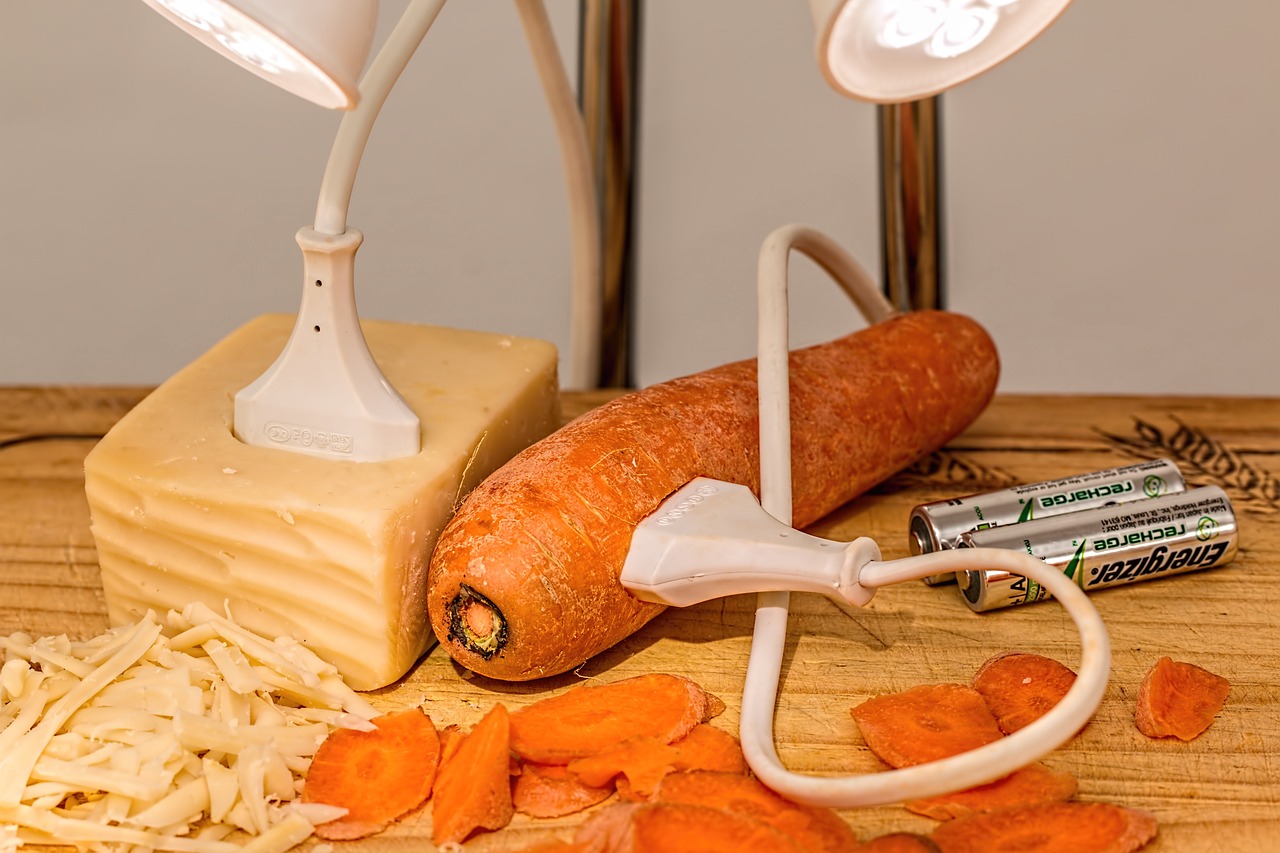
Choosing the Right Green Energy Solutions
When it comes to embracing a more sustainable lifestyle, one of the most significant steps you can take is for your home. With a myriad of options available, it can feel overwhelming to determine which technologies best suit your needs. The key is to assess your specific circumstances, including your location, energy consumption, and budget. For instance, if you live in a sunny area, solar panels might be your best bet, while those in windy regions could benefit from small wind turbines. But how do you make the right choice?
Start by evaluating your energy needs. Consider conducting an energy audit to get a clear picture of how much energy you consume on average. This will not only help you identify areas where you can reduce consumption but also guide you in selecting the appropriate green energy technology. You might be surprised to discover that simple changes can make a significant difference in your overall energy use.
Next, take a look at the available technologies. Here are some popular options:
- Solar Energy Systems: Solar panels are a fantastic way to harness the sun's energy. They come in various types, including monocrystalline, polycrystalline, and thin-film. Each has its pros and cons, so it's essential to understand which type aligns best with your energy needs and budget.
- Wind Energy Solutions: If you have enough space and live in a suitable area, small wind turbines can be an excellent investment. They can generate substantial energy, especially if you live in a consistently windy location.
- Geothermal Heating: This technology utilizes the earth's constant underground temperature to heat and cool your home efficiently. It's an often-overlooked option but can be incredibly effective in the right conditions.
Another crucial factor to consider is the initial investment and potential return. While some green technologies may require a higher upfront cost, they often lead to significant savings on energy bills in the long run. Additionally, many governments offer incentives and rebates to help offset these costs, making it even more appealing to go green.
Lastly, think about the maintenance and longevity of the systems you’re considering. Some technologies, like solar panels, require minimal upkeep, while others may need more regular attention. It’s essential to factor in these considerations when making your decision. By doing your homework and understanding your options, you can make informed choices that align with your goals for sustainability and efficiency.
To help you navigate the world of green energy, here are some frequently asked questions:
| Question | Answer |
|---|---|
| What is the most cost-effective green energy solution? | Solar panels tend to offer the best long-term savings, especially in sunny regions. |
| How much maintenance do green energy systems require? | Solar panels require minimal maintenance, while wind turbines may need more regular checks. |
| Are there government incentives for green energy? | Yes, many governments provide tax credits and rebates for homeowners who invest in renewable energy solutions. |
| Can I combine different green energy solutions? | Absolutely! Many homeowners successfully integrate multiple systems for maximum efficiency. |
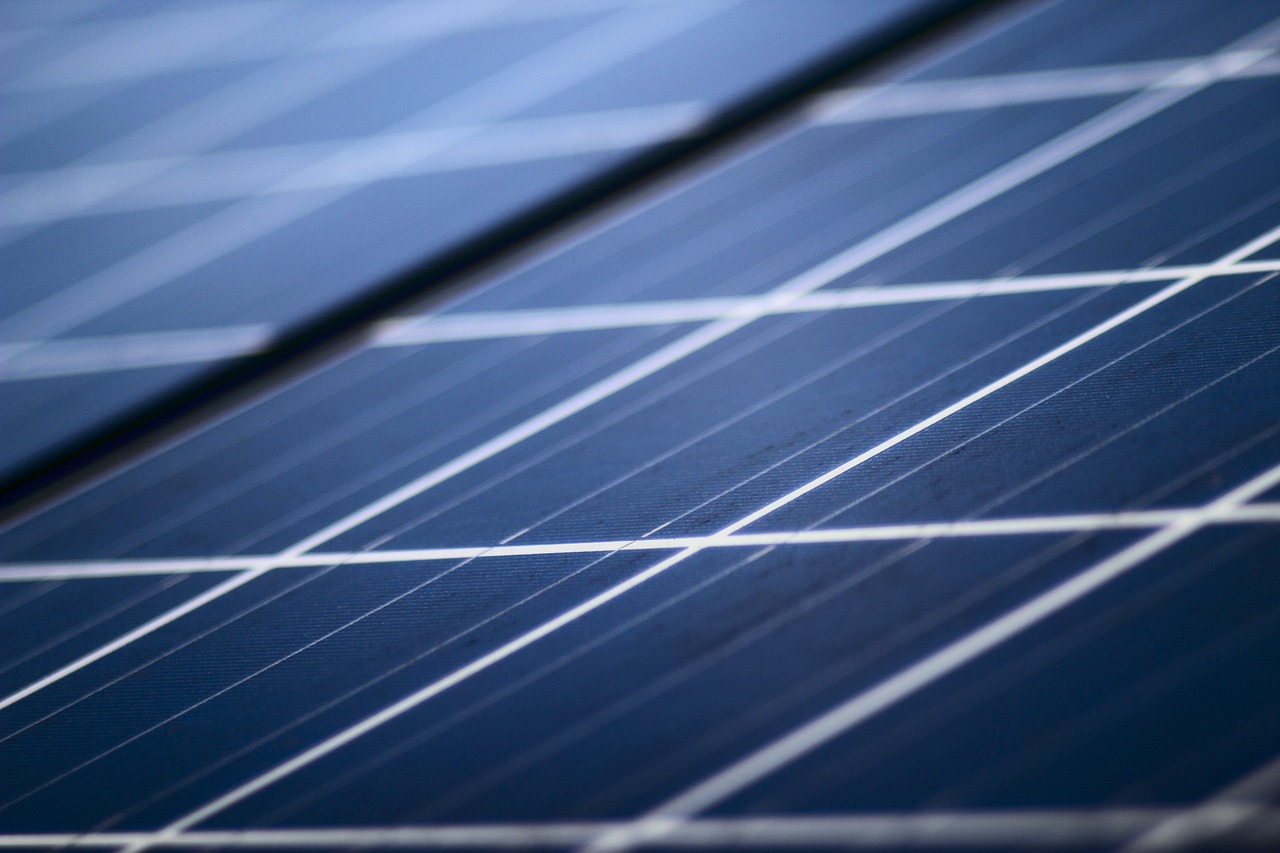
Solar Energy Systems
When it comes to harnessing the power of the sun, solar energy systems stand out as one of the most popular and effective solutions for homeowners. Imagine waking up every day knowing that the energy powering your home comes from a clean, renewable source. It’s not just a dream; it’s a reality that many are embracing. Solar panels convert sunlight into electricity, reducing reliance on fossil fuels and lowering your carbon footprint. But before you dive into the world of solar energy, it's essential to understand the different types of solar systems available and what it takes to install them.
There are primarily two types of solar energy systems: grid-tied systems and off-grid systems. Grid-tied systems are connected to the local utility grid, allowing homeowners to draw from the grid when their solar panels aren’t producing enough energy, such as during cloudy days or at night. This setup often includes net metering, which means you can sell excess energy back to the grid, potentially earning credits on your utility bill. On the other hand, off-grid systems are completely independent of the utility grid. They require battery storage to store excess energy for use when production is low, making them ideal for remote locations where grid access is limited.
Installing solar panels involves several crucial steps. First, it’s important to assess your home’s energy needs. This can be done through an energy audit, which will help you understand your current consumption patterns and how much energy you can expect to generate from solar panels. Next, you’ll need to choose the right type of solar system based on your energy needs and whether you want to be connected to the grid or go off-grid. After that, selecting a reputable solar installer is vital. A professional installation ensures that your system operates efficiently and meets local building codes.
Another factor to consider is the orientation and angle of your solar panels. Ideally, solar panels should face south at an angle of about 30 degrees to maximize sunlight exposure. However, this can vary based on your geographical location. It’s also important to ensure that your panels are installed in a location that is free from shading from trees, buildings, or other structures that could block sunlight throughout the day.
Once your solar energy system is installed, it’s crucial to monitor its performance. Many systems come with monitoring tools that allow you to track energy production in real-time. This can help you identify any issues early on, ensuring that your system operates at peak efficiency. Moreover, regular maintenance is essential to keep your solar panels in good condition. Cleaning the panels and checking for any debris or shading can significantly impact their performance.
In summary, solar energy systems offer a fantastic opportunity for homeowners to contribute to a sustainable future while enjoying the benefits of lower energy costs. By understanding the different types of systems available, assessing your energy needs, and ensuring proper installation and maintenance, you can make the most out of your solar energy investment.
- What is the lifespan of solar panels? Most solar panels have a lifespan of 25 to 30 years, with many manufacturers offering warranties for that duration.
- How much do solar panels cost? The cost of solar panels can vary widely depending on the size of the system and installation costs, but many homeowners see a return on investment within 5 to 10 years.
- Can I install solar panels myself? While it is possible to install solar panels yourself, it's recommended to hire professionals to ensure safety and compliance with local regulations.
- Do solar panels work in cloudy weather? Yes, solar panels can still generate electricity on cloudy days, although their efficiency may be reduced compared to sunny days.
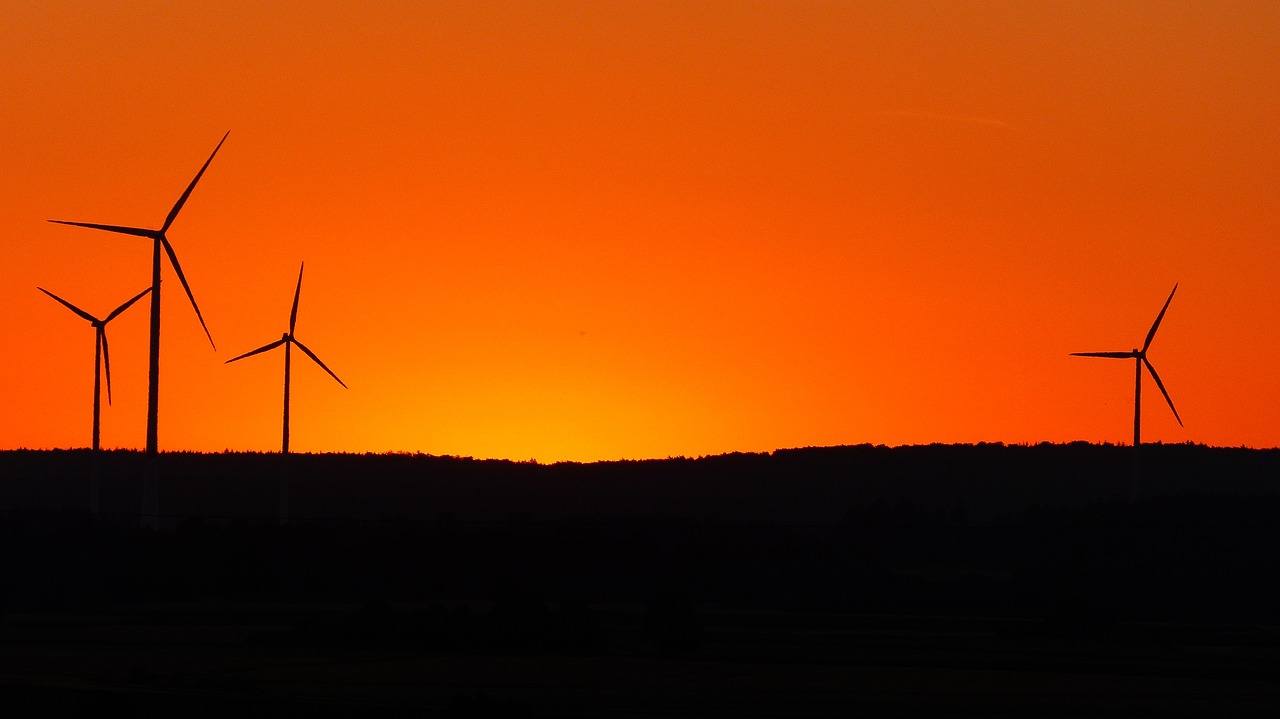
Wind Energy Solutions
When it comes to harnessing the power of nature, wind energy stands tall—literally! Small wind turbines can serve as a fantastic way to generate clean energy right from your backyard. Imagine the gentle whoosh of the blades spinning in the breeze, converting that kinetic energy into electricity for your home. But before you rush out to buy a turbine, let’s explore what you need to know about this renewable energy source.
First off, you might be wondering, “Is wind energy suitable for my home?” The answer largely depends on your location. Areas with consistent wind flow are ideal candidates for wind energy solutions. To determine the feasibility, you can conduct a simple assessment of your local wind conditions. If your region averages wind speeds of at least 10 miles per hour, you're in a good spot to consider a wind turbine.
Now, let’s talk about the types of wind turbines available. There are two primary types: horizontal-axis turbines and vertical-axis turbines. Horizontal-axis turbines are the classic design you see on wind farms, featuring two or three blades that rotate around a horizontal axis. They are typically more efficient and can produce more energy. On the other hand, vertical-axis turbines are less common but have their advantages; they can capture wind from any direction and are generally quieter.
When thinking about installation, it’s crucial to consider a few factors:
- Space: Wind turbines require a significant amount of space to operate efficiently. Ideally, they should be installed away from tall buildings or trees that could obstruct wind flow.
- Height: Taller turbines can access stronger winds, which means more energy production. However, local zoning laws may restrict how tall you can go.
- Noise: While modern turbines are designed to be quieter, it’s important to consider how noise may affect your neighbors.
After installation, the benefits can be substantial. Homeowners can drastically reduce their reliance on traditional energy sources, leading to lower utility bills. Plus, the energy generated can often be sold back to the grid, providing an additional income stream. It’s like having your own personal power plant right at home!
However, it’s essential to keep in mind that wind energy systems do require some maintenance. Regular checks on the turbine's components, such as the blades and electrical systems, can help ensure everything runs smoothly. Additionally, staying informed about local regulations regarding wind energy can save you from potential headaches down the line.
In conclusion, wind energy solutions can be a fantastic investment for homeowners looking to embrace renewable energy. With the right conditions and a bit of planning, you can turn the wind into a reliable source of power for your home. So, why not let nature do the heavy lifting? Harness the wind, and watch your energy bills drop while contributing to a greener planet!
Here are some common questions people have about wind energy solutions:
- How much does a wind turbine cost? The cost can vary widely based on the size and type of turbine, but you might expect to pay anywhere from $3,000 to $8,000 for a small residential turbine.
- Do I need a permit to install a wind turbine? Yes, most areas require a permit for installation. It’s best to check with your local government for specific regulations.
- How much energy can a wind turbine produce? This depends on the turbine size and wind conditions, but a small turbine can generate enough energy to power a significant portion of a household's electricity needs.

Implementing Green Energy Technologies
Successfully integrating green energy solutions into your home requires careful planning and execution. It’s not just about slapping a few solar panels on your roof and calling it a day. No, my friend! It’s a journey that begins with understanding your energy needs and ends with the satisfaction of knowing you’re contributing to a healthier planet. So, how do you embark on this exciting adventure? Let’s break it down.
First and foremost, conducting an energy audit is crucial. Think of it as a health check-up for your home’s energy usage. By assessing where your energy is going, you can pinpoint areas that need improvement. An energy audit will help you identify energy leaks, outdated appliances, and inefficient systems that could be costing you money. You can either hire a professional to conduct the audit or do it yourself using various online tools and guides. Either way, understanding your current energy consumption is the first step toward making informed decisions about which green technologies to implement.
Once you have a clear picture of your energy usage, it’s time to consider the installation of green energy systems. Here’s where things can get a bit tricky. While DIY projects can be fun and rewarding, hiring professionals for the installation process is highly recommended. Why? Because improper installation can lead to inefficiencies and even safety hazards. Qualified contractors have the experience and knowledge to ensure that your systems are set up correctly and functioning at their best. Plus, they can provide valuable insights into the latest technologies and best practices.
When it comes to green energy technologies, there are several options to consider. Here’s a brief overview of some popular choices:
| Technology | Description | Installation Considerations |
|---|---|---|
| Solar Panels | Convert sunlight into electricity | Roof orientation, shading, and local regulations |
| Wind Turbines | Generate electricity from wind energy | Wind availability, zoning laws, and space requirements |
| Geothermal Systems | Utilize earth’s heat for heating and cooling | Soil conditions, land space, and installation depth |
After installation, the journey doesn’t end there. Regular maintenance is essential to ensure your green energy systems continue to operate efficiently. Think of it as giving your systems a little TLC. Routine inspections can help identify potential issues before they become major problems. This includes checking for debris on solar panels, ensuring wind turbine blades are free from damage, and monitoring the performance of geothermal systems. By staying proactive, you can maximize the lifespan and efficiency of your investments.
Lastly, as technology evolves, so should your systems. Upgrading your green energy technologies can lead to improved performance and efficiency. Staying up to date with the latest advancements can also help you take advantage of new incentives or rebates that may become available. Embracing change is part of the green energy journey, and it can lead to even greater savings and environmental benefits.
- What is an energy audit? An energy audit is an assessment of your home’s energy use to identify areas for improvement.
- Do I need a professional for installation? While DIY is possible, hiring a professional ensures safety and efficiency.
- How often should I maintain my green energy systems? Routine inspections are recommended at least once a year.
- Can I upgrade my systems later? Yes, upgrading is encouraged as technology advances.
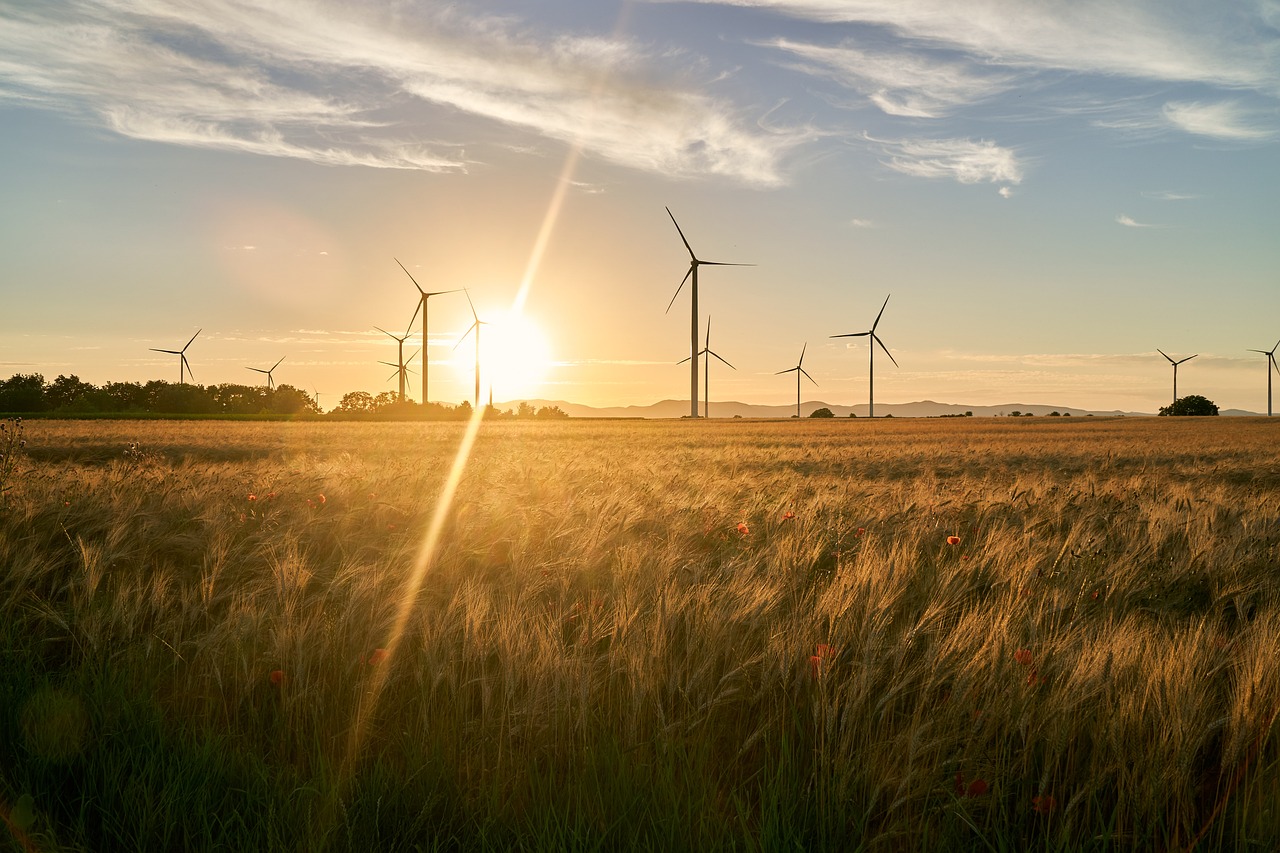
Energy Audits
Conducting an energy audit is one of the most effective ways to understand your home's energy consumption and identify areas where you can improve efficiency. Think of it as a health check-up for your home’s energy use. Just like you wouldn’t ignore a persistent cough, you shouldn’t overlook the signs of energy waste. An energy audit can reveal hidden opportunities to save money and reduce your carbon footprint.
So, what exactly does an energy audit involve? Typically, it includes a thorough examination of your home’s heating and cooling systems, insulation, windows, doors, and appliances. An auditor will assess how much energy is being consumed and where it might be leaking out. They may use specialized tools like thermal cameras to spot areas that need improvement or blower doors to measure air leakage. This detailed analysis will help you understand your current energy usage and highlight specific changes you can make.
Here are some key steps to consider when performing an energy audit:
- Gather Utility Bills: Start by collecting your utility bills for the past year. This will provide a baseline for your energy consumption and help you identify trends.
- Inspect Your Home: Walk through your home to check for drafts, poor insulation, and inefficient appliances. Pay attention to areas like attics, basements, and around windows and doors.
- Use Energy Audit Tools: If you’re feeling adventurous, consider using DIY energy audit tools available online. They can guide you through the process and help you make initial assessments.
After completing the audit, you’ll have a clearer picture of where your home stands in terms of energy efficiency. This information is invaluable as it enables you to prioritize improvements based on the potential savings and environmental impact. For example, you might discover that upgrading your insulation could lead to significant savings on your heating and cooling bills!
Moreover, many utility companies offer free or discounted energy audits as part of their energy efficiency programs. This is an excellent opportunity to take advantage of professional expertise without breaking the bank. They can also provide you with a detailed report outlining recommended upgrades and potential savings, making it easier for you to plan your next steps.
In summary, an energy audit is not just a one-time event; it’s a proactive approach to maintaining and improving your home’s energy efficiency. By regularly assessing your energy use and making informed decisions based on your findings, you can ensure your home remains sustainable and cost-effective for years to come.
- What is an energy audit? An energy audit is an assessment of your home’s energy use to identify areas where you can improve efficiency and save money.
- How often should I conduct an energy audit? It’s advisable to perform an energy audit every few years or whenever you make significant changes to your home, such as renovations or new appliances.
- Can I perform an energy audit myself? Yes, you can conduct a DIY energy audit, but hiring a professional can provide more accurate assessments and recommendations.
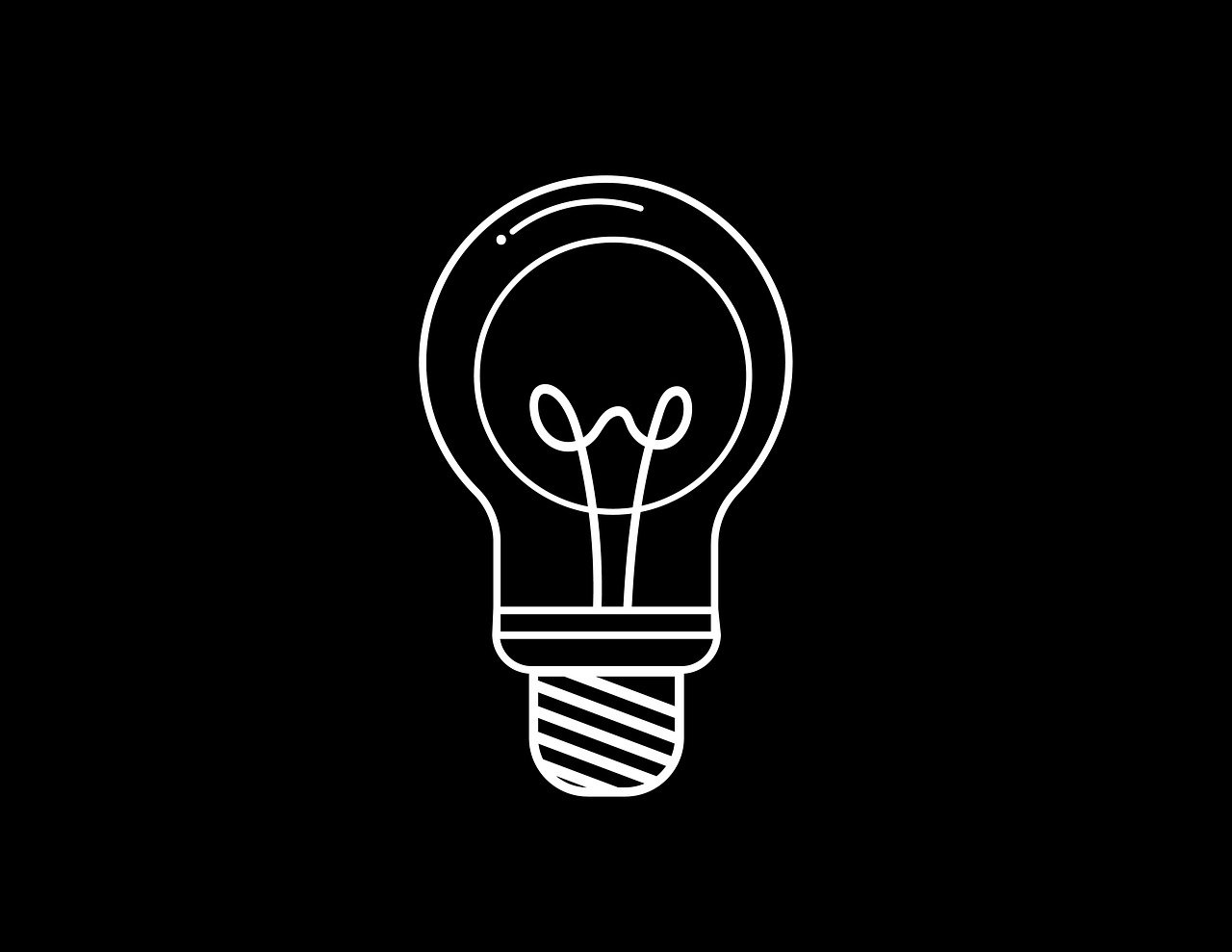
Professional Installation
When it comes to integrating green energy solutions into your home, is crucial for ensuring that everything runs smoothly and efficiently. Imagine trying to assemble a complex piece of furniture without the instructions—frustrating, right? The same principle applies to installing solar panels or wind turbines. Hiring qualified professionals not only saves you time but also guarantees that your systems are set up correctly, maximizing their performance and lifespan.
By opting for professional installation, you benefit from the expertise of individuals who have undergone extensive training and possess the necessary certifications. These experts are well-versed in local building codes and regulations, which can be a maze for the average homeowner. Think of them as your personal guides through the intricate landscape of renewable energy installation.
Moreover, professionals can provide valuable insights during the installation process. They can assess your property to determine the best locations for solar panels or wind turbines, ensuring that you capture the most energy possible. For instance, a professional might suggest placing solar panels on a south-facing roof for optimal sun exposure or recommend the right size of a wind turbine based on your local wind conditions.
Another important aspect of professional installation is the warranty and support that often comes with it. Many reputable contractors offer warranties on their work, which means that if something goes wrong, you won’t be left high and dry. This peace of mind is invaluable, especially when you’ve invested a significant amount of money into green energy technologies.
In summary, while the DIY approach might seem appealing, the benefits of professional installation far outweigh the risks. Here are some key reasons to consider:
- Expertise: Professionals have the knowledge and experience to install systems correctly.
- Compliance: They ensure that installations meet local codes and regulations.
- Efficiency: Proper installation maximizes the performance of your green energy systems.
- Warranty: Many contractors provide warranties, offering peace of mind.
So, as you embark on your journey towards a more sustainable home, remember that investing in professional installation is a step in the right direction. It’s not just about putting up solar panels or wind turbines; it’s about creating a reliable, efficient energy system that you can count on for years to come.
Q: Why should I hire a professional for green energy installation?
A: Hiring a professional ensures that your systems are installed correctly, comply with local regulations, and operate efficiently, providing you with peace of mind and potentially saving you money in the long run.
Q: How can I find a qualified contractor for installation?
A: Look for contractors with certifications in renewable energy systems, read reviews, and ask for recommendations from friends or family who have had similar installations.
Q: What should I expect during the installation process?
A: Expect a thorough assessment of your property, discussions about the best options for your needs, and a timeline for the installation. The process may take a few days depending on the complexity of the system.
Q: Will I need to make any changes to my home before installation?
A: This depends on your current setup. In some cases, minor modifications may be needed to accommodate solar panels or wind turbines, which your contractor will discuss with you during the assessment.

Maintaining Your Green Energy Systems
Maintaining your green energy systems is crucial to ensure they operate at peak efficiency and longevity. Just like a car needs regular oil changes and tune-ups, your solar panels, wind turbines, and other renewable energy technologies require attention too. Think of it as giving your home a health check-up. By keeping your systems in top shape, not only do you enhance their performance, but you also protect your investment and contribute positively to the environment.
One of the first steps in maintenance is conducting routine inspections. These inspections help identify potential issues before they escalate into costly repairs. For instance, when it comes to solar panels, check for any dirt, debris, or shading that might block sunlight. A simple cleaning can make a significant difference in energy production. Similarly, for wind turbines, ensure that the blades are free from obstructions and that there are no unusual noises during operation. Keeping an eye on these details can save you both time and money in the long run.
In addition to inspections, it's essential to stay informed about the latest technology upgrades. As the renewable energy sector evolves, new advancements can enhance the efficiency of your systems. For example, newer solar panel models might offer better performance or durability compared to older versions. Upgrading your technology not only boosts energy output but can also provide you with better warranties and support. Therefore, keeping track of emerging technologies and considering upgrades when necessary is a smart move.
Lastly, don't forget about the importance of professional maintenance. While many homeowners can handle basic upkeep, hiring qualified professionals for more complex tasks can be beneficial. These experts can perform detailed inspections and maintenance that you might overlook. They can also provide insights into optimizing your system's performance, ensuring that you get the most out of your investment. After all, just as you wouldn’t trust an amateur to fix your car, the same goes for your green energy systems.
- How often should I inspect my solar panels? It's recommended to inspect your solar panels at least once or twice a year, but consider more frequent checks if you live in an area with heavy dust or debris.
- What signs indicate that my wind turbine needs maintenance? Listen for unusual noises, check for vibrations, and inspect the blades for damage. If you notice any of these signs, it's time to call a professional.
- Are there any government incentives for maintaining green energy systems? Yes, many governments offer tax credits or rebates for maintenance and upgrades of renewable energy systems. Check with local authorities for specific programs.

Routine Inspections
When it comes to maintaining your green energy systems, are not just a suggestion; they're a necessity. Think of these inspections as the regular check-ups you schedule for your health. Just as you wouldn’t wait until you’re feeling unwell to see a doctor, you shouldn’t wait for your solar panels or wind turbines to show signs of wear before you take action. Regular inspections can help you spot potential issues before they escalate into costly repairs, ensuring that your systems run smoothly and efficiently.
During a routine inspection, there are several key areas you should focus on. Start by checking for any visible damage or debris on your solar panels or wind turbines. Dust, leaves, or even bird droppings can accumulate and hinder their performance. If you notice any physical damage, such as cracks or loose connections, it’s crucial to address these issues promptly. Not only can they affect energy production, but they can also lead to more significant problems down the line.
Another critical aspect of routine inspections is monitoring the performance of your systems. Keep an eye on the energy output compared to what you expect based on your previous usage and the weather conditions. If you notice a significant drop in performance, it could indicate a malfunction that needs immediate attention. Many modern systems come with monitoring software, making it easier for you to keep track of their efficiency from the comfort of your home.
Additionally, it’s wise to document your findings during each inspection. Keeping a detailed log can help you identify patterns over time. For instance, if you notice that your solar panels consistently underperform during a specific season, this could be a sign of a larger issue requiring further investigation. By maintaining a record, you can also provide valuable information to any technicians you may hire in the future.
In summary, routine inspections are essential for the longevity and efficiency of your green energy systems. By being proactive and diligent in your maintenance efforts, you can ensure that your investment continues to pay off in both energy savings and environmental benefits. Remember, a little effort today can lead to significant savings tomorrow!
- How often should I conduct routine inspections on my green energy systems?
It's recommended to perform inspections at least twice a year, ideally before and after the peak season for energy production.
- What should I do if I find damage during an inspection?
If you discover any damage, contact a qualified technician immediately to assess the situation and make necessary repairs.
- Can I perform inspections myself, or should I hire a professional?
While you can perform basic checks, hiring a professional for a thorough inspection is advisable to ensure everything is functioning correctly.
- What tools do I need for a basic inspection?
Basic tools may include a ladder, a multimeter for checking electrical output, and a cleaning brush for solar panels.
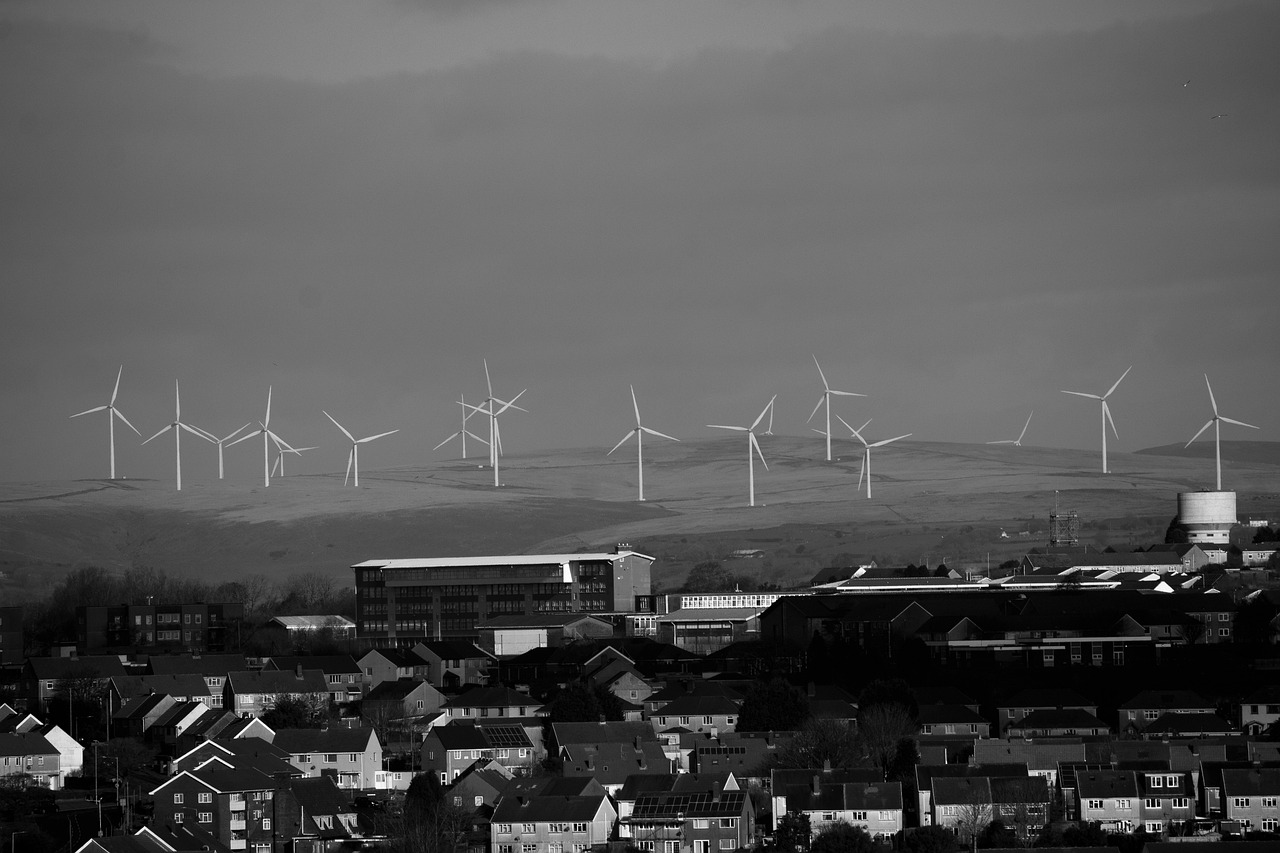
Upgrading Technology
As the world of technology evolves at a breakneck pace, staying updated with the latest advancements in green energy systems is not just a good idea—it's essential. Upgrading your technology can significantly enhance the efficiency and output of your renewable energy solutions. Imagine your solar panels or wind turbines working like a finely tuned machine, adapting to the latest innovations that maximize energy capture and reduce waste. Sounds appealing, right?
One of the most compelling reasons to upgrade your green energy systems is the potential for increased energy production. Newer models of solar panels, for instance, are designed to capture sunlight more efficiently, which means they can generate more electricity even in less-than-ideal weather conditions. According to recent studies, upgrading to the latest solar technology could boost your energy output by as much as 30%. This is not just a theoretical benefit; many homeowners have reported substantial increases in their energy efficiency after making the switch.
Additionally, upgrading your technology often comes with improved durability and lower maintenance costs. Modern systems are built to withstand harsher weather conditions and have longer lifespans. For example, many new solar panels come with warranties that extend up to 25 years, providing peace of mind and a solid return on investment. This means fewer headaches down the line regarding repairs or replacements, allowing you to focus on enjoying your sustainable lifestyle.
However, upgrading doesn’t just mean replacing old equipment with new; it also involves integrating smart technology into your energy systems. Smart home technology can optimize energy usage by monitoring your consumption patterns and adjusting settings automatically. For instance, smart thermostats can learn your habits and help you save energy by adjusting the temperature when you're not home. This kind of integration can lead to significant savings on your utility bills, making it a win-win situation.
But how do you know when it’s time to upgrade? Here are a few signs that indicate an upgrade might be necessary:
- Your current system is more than 10 years old.
- You notice a significant drop in energy production.
- Your equipment requires frequent repairs.
- New technology offers features that your current system lacks.
Before making any upgrades, it’s crucial to conduct an energy audit to understand your current energy usage and identify areas for improvement. This will help you make informed decisions about which technologies will provide the best return on investment. Consulting with professionals in the field can also provide valuable insights into the latest technologies that align with your specific energy needs.
In conclusion, upgrading your green energy technology is not merely about keeping up with trends; it’s about maximizing efficiency, minimizing costs, and enhancing the overall performance of your energy systems. By staying informed and proactive, you can ensure that your home remains a beacon of sustainability and innovation, paving the way for a greener future.
Q1: How often should I consider upgrading my green energy systems?
A1: It's advisable to evaluate your systems every 5 to 10 years, especially if they are showing signs of wear or if newer technologies promise better efficiency.
Q2: What are the costs associated with upgrading?
A2: Costs can vary widely depending on the technology being upgraded. However, many homeowners find that the long-term savings on energy bills outweigh the initial investment.
Q3: Will upgrading my systems qualify me for any incentives or rebates?
A3: Yes, many local and federal programs offer incentives for upgrading to more efficient technologies. It's worth researching what's available in your area.
Q4: How do I know which technology is best for my home?
A4: Conducting an energy audit and consulting with professionals can help you determine the most suitable upgrades based on your energy needs and local conditions.
Frequently Asked Questions
- What is green energy?
Green energy refers to renewable energy sources that are environmentally friendly, such as solar, wind, and hydroelectric power. These energy sources help reduce carbon footprints and combat climate change.
- How can I benefit from switching to green energy?
Switching to green energy can lead to lower energy bills, increased property value, and a positive environmental impact. You'll not only save money in the long run but also contribute to a healthier planet.
- Are there any government incentives for adopting green energy?
Yes! Many governments offer various financial incentives, including tax credits and rebates, to encourage homeowners to invest in green energy solutions. It's worth checking your local programs to see what you might qualify for.
- What types of solar energy systems are available?
There are several types of solar energy systems, including grid-tied, off-grid, and hybrid systems. Each has its own installation requirements and benefits, so it's essential to assess your home's needs before choosing one.
- How do I conduct an energy audit?
An energy audit involves evaluating your home's energy usage to identify areas for improvement. You can perform a DIY audit or hire a professional to assess your energy consumption and suggest optimizations.
- Why is professional installation important for green energy systems?
Hiring qualified contractors ensures that your green energy systems are installed correctly and function efficiently. Proper installation can prevent future issues and maximize the performance of your renewable energy solutions.
- How can I maintain my green energy systems?
Regular maintenance is crucial for the longevity and efficiency of systems like solar panels and wind turbines. Conduct routine inspections, clean the equipment, and address any issues promptly to keep everything running smoothly.
- When should I consider upgrading my green energy technology?
As technology evolves, you may want to upgrade your systems to enhance performance or efficiency. Staying up to date with advancements can lead to better energy production and cost savings over time.



















